Heptapleurum: description, care and reproduction, diseases
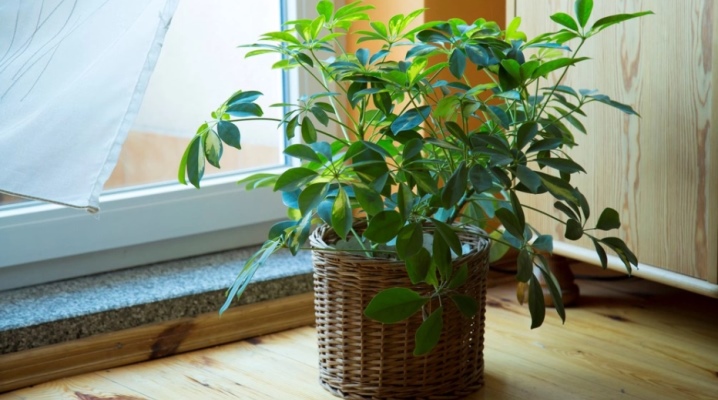
Heptapleurum is a plant from the Araliev family. His homeland is the tropics of Asia. In nature, you can find a large number of its varieties, but in indoor conditions it is possible to grow only 3 of its species.
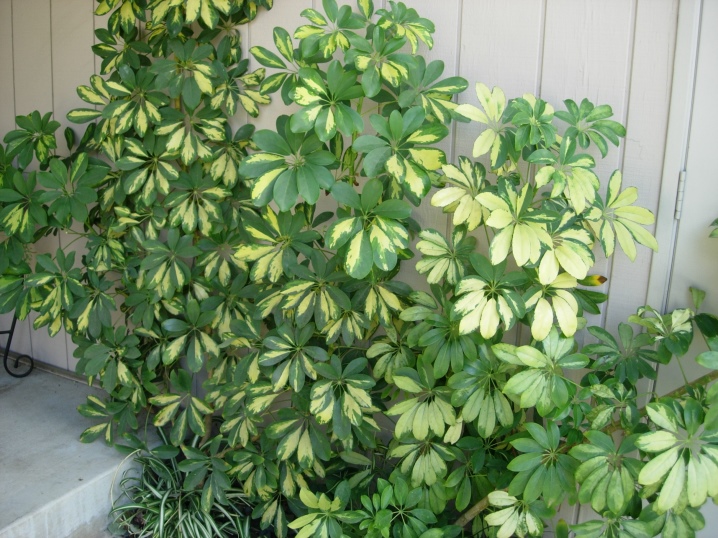
Peculiarities
Heptapleurum is an unpretentious indoor flower, which stands out with oval leaves, pointed towards the end. It has the shape of a small tree or shrub on petioles. It grows fast enough, in the wild it can reach 6-8 meters in height. It has a tree-like erect stem. Each of them has leaves that are located in a circle. The leaves are shiny, they can grow up to 15 cm.
The plant blooms only in a natural tropical climate. These are white flowers gathered in panicles.
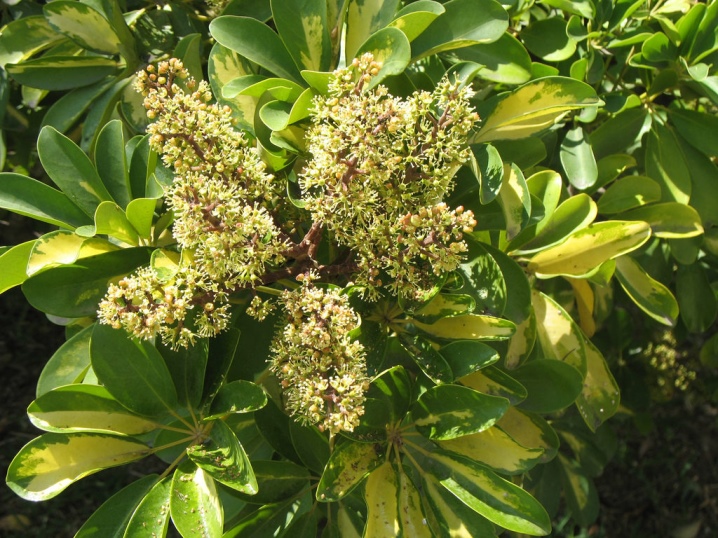
The flower has 3 varieties that can be grown at home.
- Geisha Girl. The species also has the name Woody. In the wild, it can be found on the Pacific coast. It is characterized by rapid growth, reaching a height of 2.5 meters. It has a straight trunk with bright green leaves. The plant can be both a shrub and a tree. No flowering was observed under indoor growing conditions.
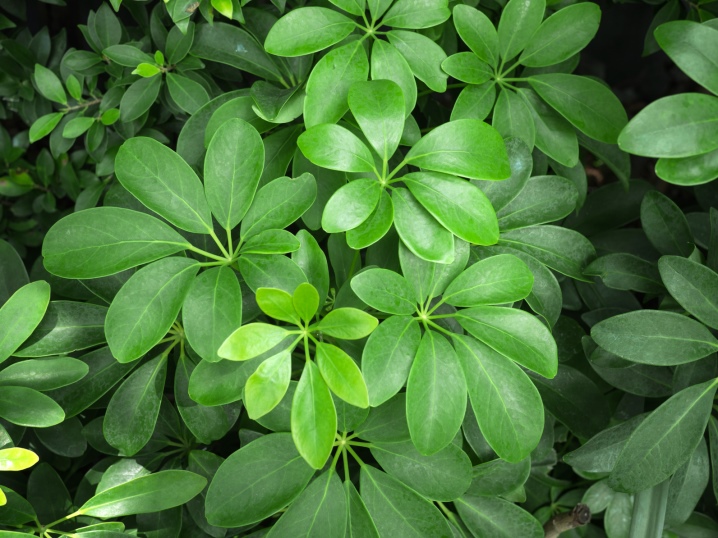
- Hayata. The homeland of this species is also the coast of the Pacific Ocean with high humidity. It is distinguished from other species by the silvery color of large leaf plates. In the wild, it grows up to 2 meters.
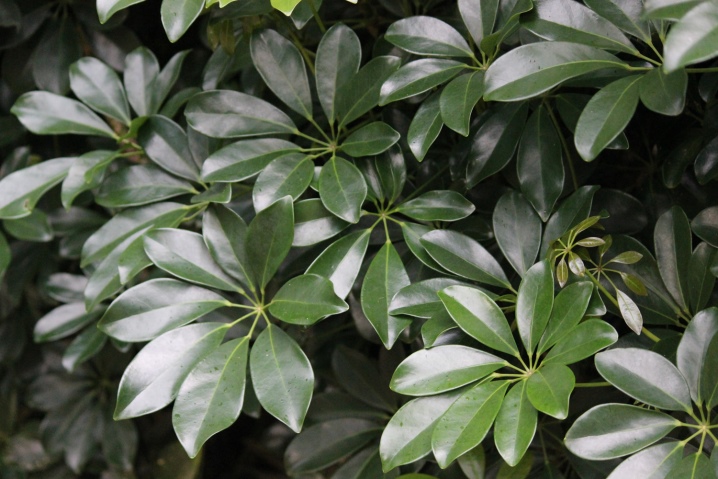
- Variegata. The species has dark green leaf plates with yellowish blotches. Grows in the form of a small tree or shrub. Basically, gardeners form a shrub from this type of heptapleurum, which grows up to 2.5 meters under optimal conditions.
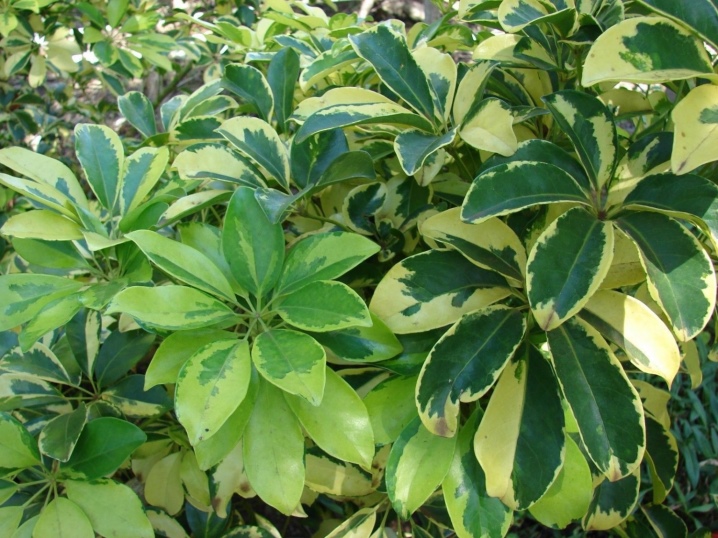
Care
Caring for heptapleurum is quite simple and does not take much time. With the right content, the flower takes root well and pleases gardeners with its rapid growth and luxurious leaves. The plant gets used to one place, so it does not like when its location is changed.
- Watering. With the onset of summer, heptapleurum especially needs abundant watering. But you only need to water it on dry ground. In winter, the flower is at rest, so the moisture is reduced, and spraying continues for the entire period.
If the foliage starts to fall off, this is the first sign of excess moisture. In this case, watering is temporarily stopped.
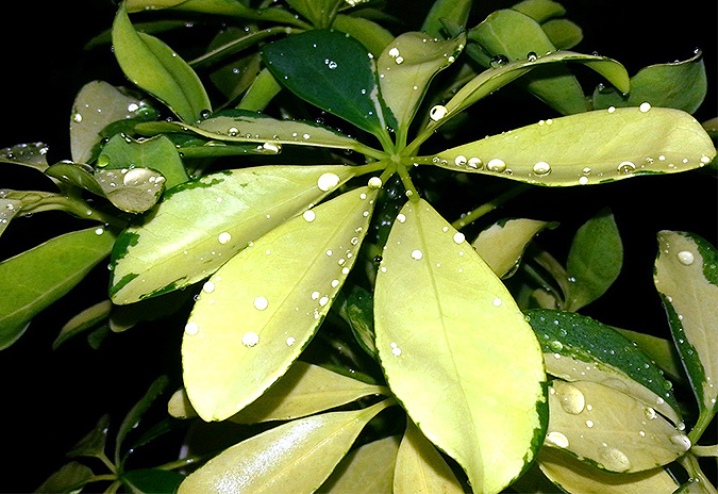
- Illumination and choice of location. The plant loves light, but without direct sunlight. They can burn the leaves. In a shaded place, the flower also grows well, but with a lack of sun, it loses its decorative properties. The flower grows beautifully next to other plantings. This can be a summer planting in a flower bed or growing in a winter garden.
Try to protect the culture from drafts and hypothermia.
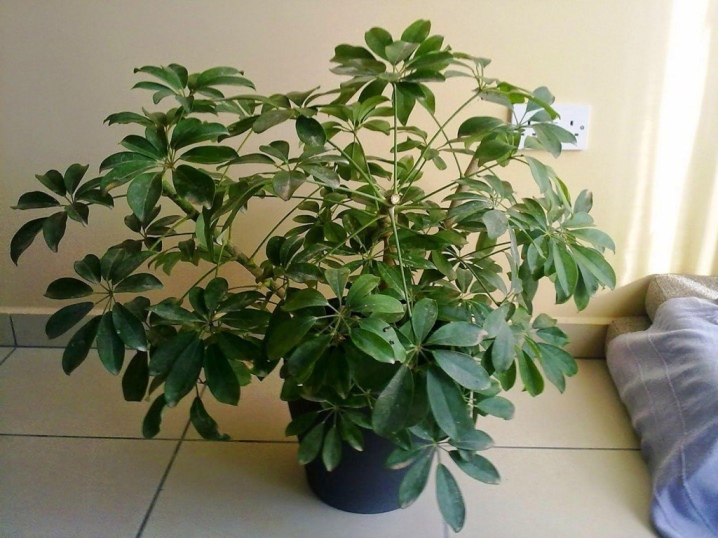
- Temperature conditions. With the onset of the hot season, the flower must be provided with a temperature of up to 25 degrees, since it does not tolerate the heat. In winter, the temperature is lowered to 17 degrees.

- Air humidity. Growing in a humid microclimate has a very favorable effect on the heptapleurum. At home, this can be ensured by regular irrigation or wiping the leaves with a damp sponge. This procedure will not only saturate the plant with moisture, but also remove dust from the leaves. With a lack of moisture, they will dry out and die off.
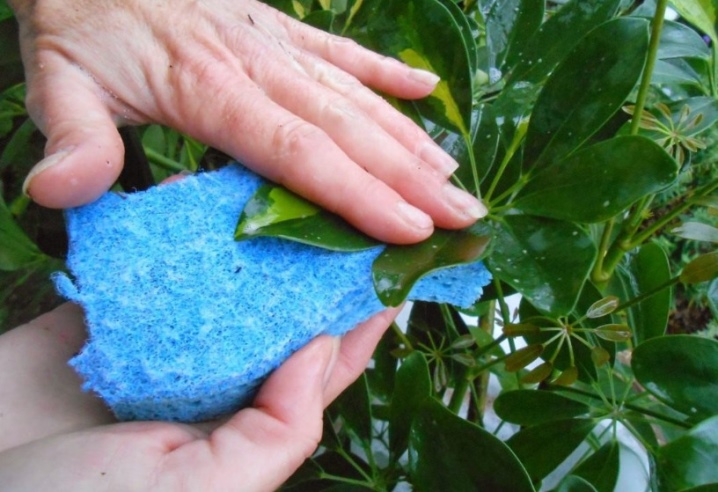
- The soil. If you have not purchased a ready-made mixture in the store for growing a flower, then you can prepare it yourself. This will require peat and leaf land, sand.All these components are mixed in equal proportions.

- Features of the transplant. Young plants need replanting every year. Spring is a good time for this. But if your flower has reached a large size and its transplant is extremely inconvenient, you can skip it, but you will need to add fertile soil to the top of the soil. This procedure will be enough for an adult flower. A good drainage layer must be maintained with any planting and replanting.
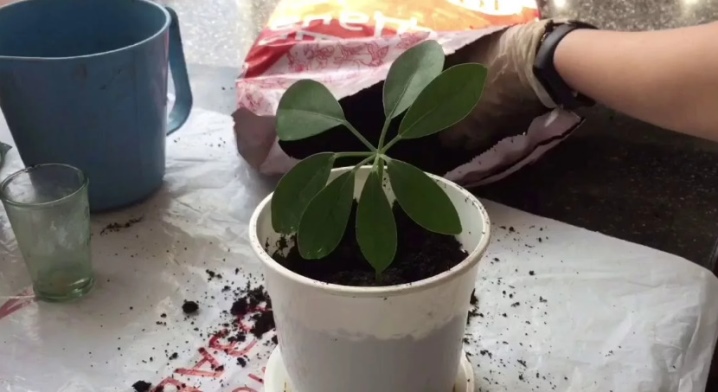
- Pruning. Plants that are already well grown require pruning. This procedure is carried out only in the spring, so that the tree painlessly sprouts new shoots.

- Support. With proper care, in indoor conditions, the plant can reach 2 meters in height. To support the trunk, he needs to build a support.
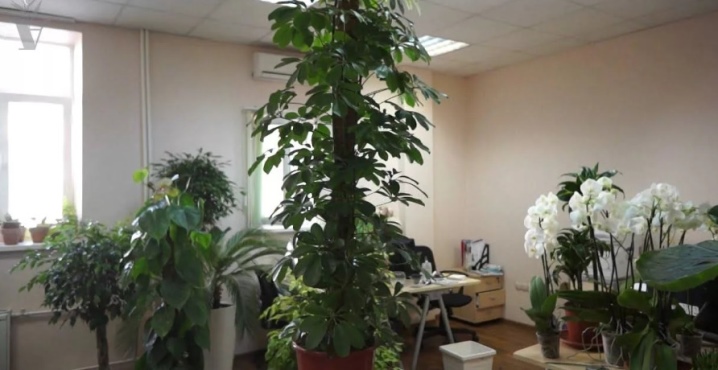
- Top dressing. It is necessary to fertilize the flower in spring and summer 2 times a month. To do this, you can use natural or mineral fertilizers. In winter, the plant does not need feeding.
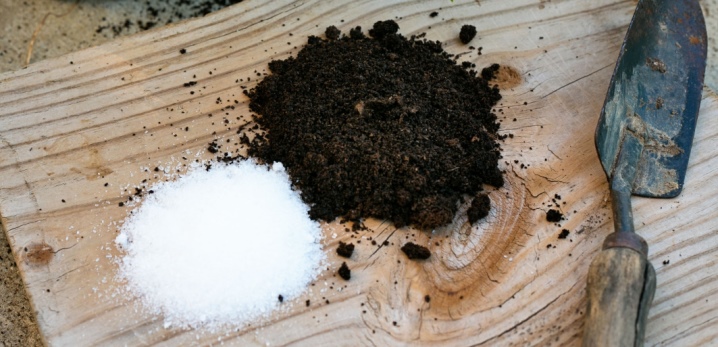
Reproduction
Propagation by cuttings is possible by cutting off the upper stems. They are placed in moist soil and covered with a jar to create a greenhouse effect. Next, the cuttings are removed to a shaded warm place with high humidity. The soil must contain peat and sand. Seed propagation is a rather laborious process, but effective. For this, the planting material is planted in the ground under the film and left in a warm place.
As soon as the sprouts reach a height of 5-10 cm, they can be planted in separate pots.
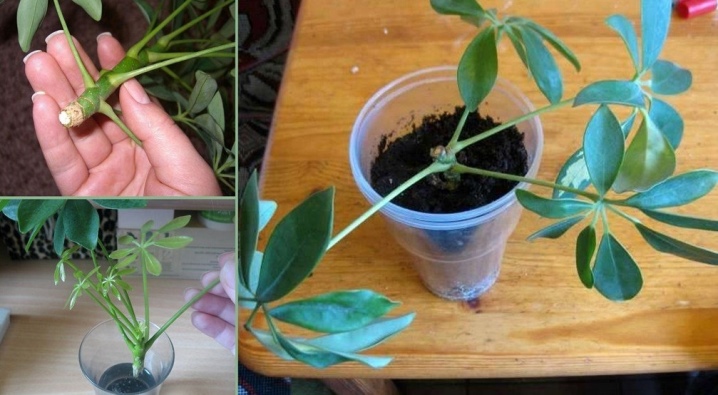
Difference from shefflers
Heptapleurum and shefflera are related plants, therefore they are similar to each other. However, they have many differences. Schefflera has the shape of a small tree, and the heptapleurum can be either a tree or a bush. Schefflera is odorless, and the aroma of heptapleurum resembles geranium.

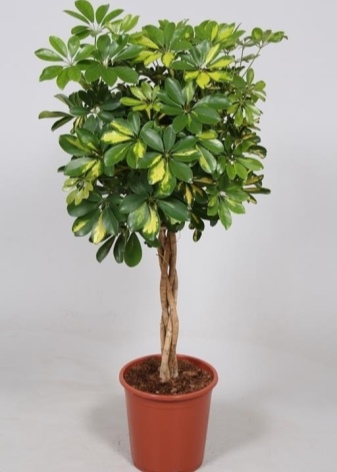
Diseases and pests
Under improper conditions, the plant can be infected with diseases and pests. Excess moisture or dry air can trigger the appearance of spider mites, mealybugs, or aphids.
The first sign of a spider mite is an invisible spider web on the leaves. The leaf plates begin to die off and become covered with thin cracks.
For treatment, the plant must be rinsed under running water and left in a damp room. With an ultraviolet lamp, disinfection can be carried out every week for 2 minutes. To combat these parasites, you can also use spraying with "Aktara", "Fitoferm" or use a solution of laundry soap, which must be thoroughly wiped off each leaf.
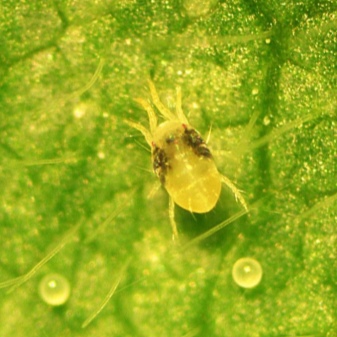

When a plant is damaged by aphids, drops appear on the shoots. Insects can be seen on the inside of the leaf plate. To destroy them, use an infusion of nettle or tobacco. Of the chemicals, you can use "Decis" or "Actellic".
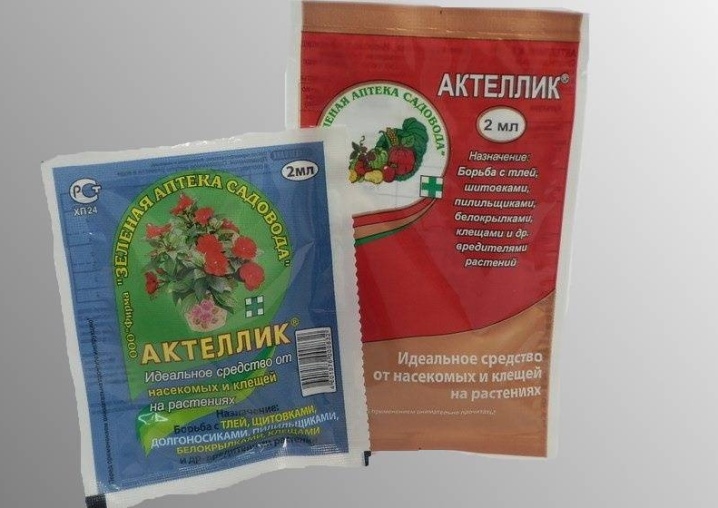
If the surface of the leaves is covered with a fluffy, cotton-like bloom, this means that the plant has been attacked by a mealybug. The plant lags behind in development. To combat the disease, you can also resort to using soapy water or infusion of garlic and tobacco. If these compounds do not help, treat the culture with chemicals such as Actellik or Fitoverm.
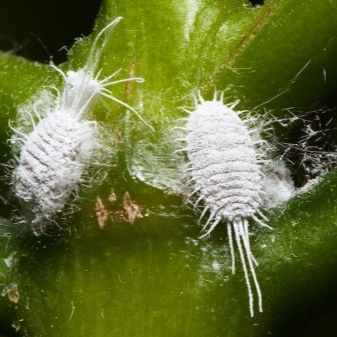

Also, due to an excess of moisture, rot may appear. To get rid of it, the plant is transplanted into another container and all infected parts are cut off. Places of cuts must be disinfected. At low temperatures, spots begin to appear on the leaves of the plant. In low light, the leaves can lose their luster and begin to fade. Due to temperature changes and drafts, their edges begin to dry out and turn brown. All these diseases can be easily eliminated with proper care.
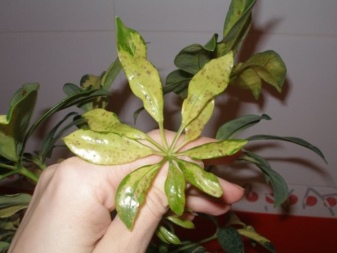
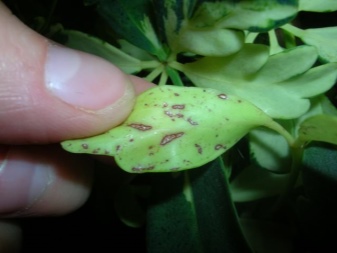
In the next video, you will learn the secrets of heptapleurum care.































The comment was sent successfully.